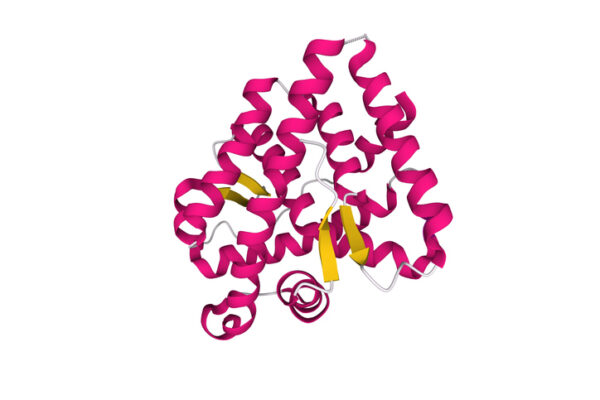
The rare disorder Kennedy’s disease leads to progressively worsening muscle weakness in the limbs as well as difficulty speaking and swallowing. There are no FDA-approved treatments for the inherited neuromuscular disorder, but the scientists at Nido Biosciences have been quietly developing a molecule that could offer a way to selectively drug a target at its root.
Nido has already begun human testing of its drug candidate. On Monday, the Watertown, Massachusetts-based biotech revealed $109 million supporting its lead program and others in development for neurological disorders. The startup is a product of the 4:59 Initiative, the company creation effort of venture capital firm 5AM Ventures.
The medical community has been aware of Kennedy’s disease, also called spinal and bulbar muscular atrophy (SBMA), for more than 100 years, though what drives its pathology has been less well understood, said Nido CEO Jeremy Springhorn. The disease derives its name from William Kennedy, a physician who first described the disease in a 1968 report. SBMA’s association with mutations to the androgen receptor did not happen until more than 20 years later. The disease was tied to trinucleotide repeats, sequences of genetic code that repeat to a larger than normal number of copies. Trinucleotide repeats have also been found to cause other inherited neurological and neuromuscular diseases, such as Huntington’s and myotonic dystrophy type 1.
The androgen receptor has already been successfully drugged. Androgen receptor-blocking drugs are used to inhibit the effects of hormones that feed cancer cell growth. The challenge for an androgen receptor drug is blocking this target without also inhibiting the receptor’s normal function. Nido’s drug candidate, NIDO-361, is designed to do just that. Pointing to oral “SERMs,” the class of cancer drugs that work by selectively modulating estrogen receptors, Springhorn said Nido’s lead drug is the androgen equivalent—a selective androgen receptor modulator, or SARM. [Paragraph updated to correct reference to SERMs.]
“The innovation that came to Nido was understanding that you could take a small molecule and bind it to a previously undrugged pocket and correct its shape,” said Springhorn, who got his first taste of rare disease drug development as a scientist at Alexion Pharmaceuticals and went on to serve in senior roles at Flagship Pioneering and Syros Pharmaceuticals.
NIDO-361 traces its origins to the research of J. Paul Taylor at St. Jude Children’s Research Hospital. In preclinical research, Taylor’s lab was able to modulate the AF2 domain of the androgen receptor as a way of ameliorating the effects of SBMA. The study results were published in the journal Nature Medicine in 2018. Nido was formed later that year. The startup has since developed a technology platform that takes induced pluripotent stem cell-derived neurons, puts mutations into them, and runs screens to find novel drug targets. Springhorn said the technology enables Nido to see locations of previously undrugged pockets that can be precisely targeted as a way of restoring cellular function.

A Deep-dive Into Specialty Pharma
A specialty drug is a class of prescription medications used to treat complex, chronic or rare medical conditions. Although this classification was originally intended to define the treatment of rare, also termed “orphan” diseases, affecting fewer than 200,000 people in the US, more recently, specialty drugs have emerged as the cornerstone of treatment for chronic and complex diseases such as cancer, autoimmune conditions, diabetes, hepatitis C, and HIV/AIDS.
Nido is not the first company to try to develop a treatment for SBMA. Takeda Pharmaceutical’s leuprorelin (brand name Lupron), a hormone therapy whose FDA-approved indications include prostate cancer, breast cancer, and endometriosis, is also approved as an SBMA treatment in Japan. The 2017 regulatory nod in Japan made the injectable drug the only therapy approved anywhere in the world for treating SBMA, though it has limitations. Clinical trial results showed the drug can stop the progression of swallowing difficulty. However, testing has not shown the drug can improve gait. Novartis was developing a drug designed to mimic insulin-like growth factor-1 (IGF-1), a protein whose levels are low in SBMA patients. Results from mid-stage testing published in 2018 showed that while the experimental drug led to improved muscle volume, it did not improve muscle strength and function.
The Phase 1 test of NIDO-361 began last year. Springhorn said Nido expects a readout from the trial “soon.” In the near-term, the company aims to complete the Series B financing and move a second program into lead optimization. Nido has not yet disclosed the target of that small molecule, which is being developed for amyotrophic lateral sclerosis and rare tauopathies, which are neurodegenerative disorders characterized by the buildup of the tau protein in the brain. But Springhorn added that this research could eventually bring Nido into more prevalent diseases by offering multiple mechanisms of action. For example, the drug could turn on autophagy, a cellular process for removing dysfunctional cellular components, while also limiting neuroinflammation and limiting cell death.
“Those three underpin many neurodegenerative diseases, both rare and common,” Springhorn said.
Nido’s $109 million in financing to date is a combination of seed, Series A, and Series B cash. Springhorn declined to provide a detailed breakdown of the amounts raised in each round. The Series A financing, which closed in 2020, was co-led by 5AM Ventures, Abingworth, and Bessemer Venture Partners with participation from Osage University Partners and Eli Lilly and Company. Bioluminescence Ventures led the Series B round, which Springhorn said remains open to new investors.
Image by vdvornyk, via Getty Images













